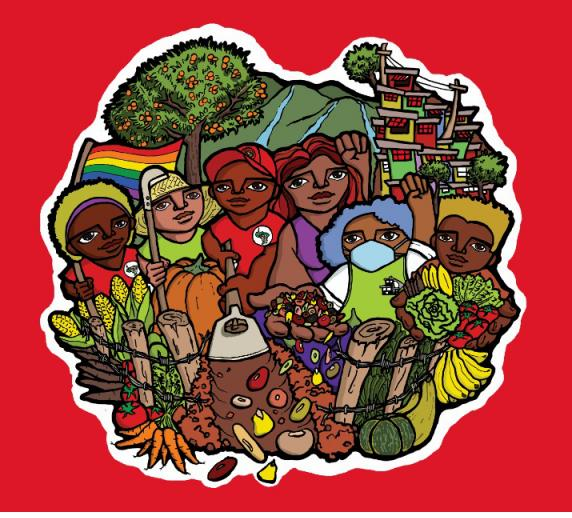
In Brazil 1% of people own roughly 50% of the land, while millions of Brazilians (roughly 40%) own nothing, without even enough resources to adequately feed themselves. To rectify this situation, at the end of the 1970’s, landless workers began occupying the land of large landholders, and claim their natural right to a piece of earth to work and live. In the process of collectivising their struggle, Movimento Sem Terra (MST) [Movement of the Landless], was born, and quickly expanded across the whole massive extent of the country. Using a highly effective form of direct action, which can be summed up as ‘Occupy, Resist, Produce’, around 450,000 families of sem-terra (landless people) have conquered millions of hectares throughout the country, establishing an autonomous and dignified life for themselves, escaping the inhumane working conditions and starvation wages, that would otherwise await them in one of Brazil’s mega plantations. At the same time, they have organised themselves into one of the most potent political forces in the country, dedicating themselves to land reform based on the principle of ‘the land is for those who work it’.
Going beyond the foundational act of occupying land, MST aims for a wide reaching, radical, and community led land reform, with the goal of creating a co-operative economy, a community based critical education, and a rural landscape of self organised empowered communities. Organised in a bottom up, participatory manner, MST is a radical challenge to the way of doing politics, not only in Brazil, but across the world; empowering people to take the work of political action into their own hands. The success of their movement has inspired progressive forces throughout the world, with Noam Chomsky describing MST as ‘the most important social movement in the world’.
note: This is a journalist account of my time with MST Those interested in a deeper dive into the history and organisational structure can find it here.
In June of 2022 I had a chance encounter in the interior of Bahia, that brought me in contact with the movement. Located in the north east of Brazil, Bahia is celebrated for its vibrant Afro-Brazilian culture. It is home to the largest African diaspora in the world, and the African roots can be heard, tasted, felt, and seen everywhere. From the people and their colourful flowing clothes, to the pulsating rhythms of the drum, and acrobatic dance/material art of capoeira, as well as the deliciously sweet and spicy flavours served up on the streets; Bahia is the beating African heart of Brazil.
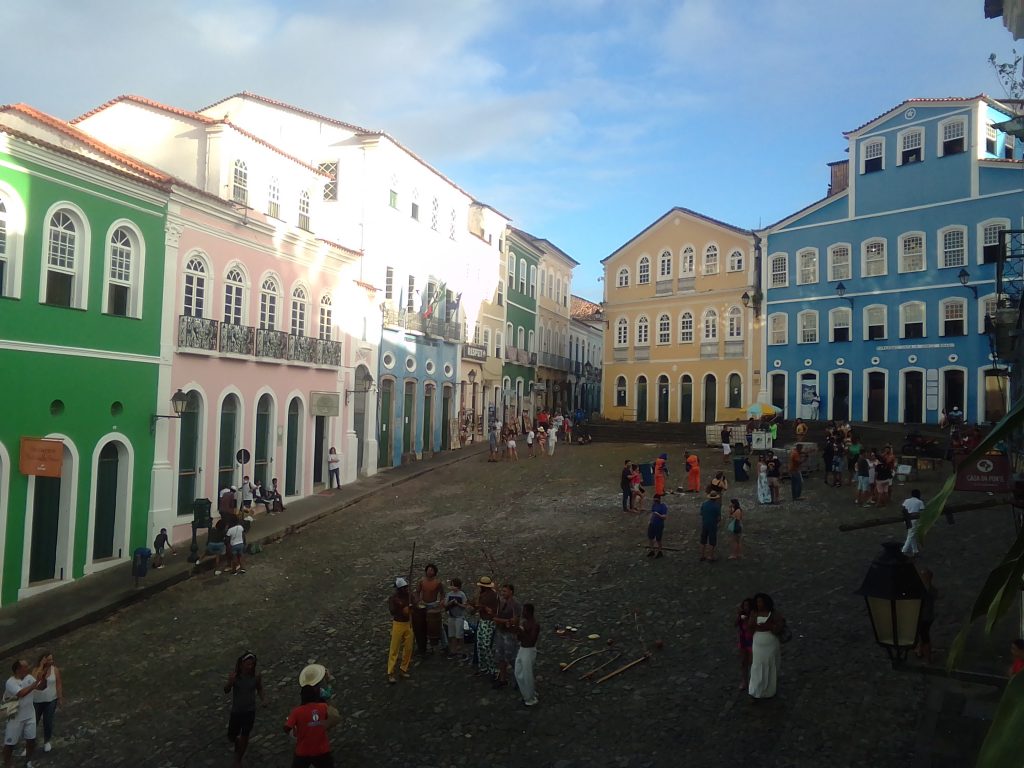

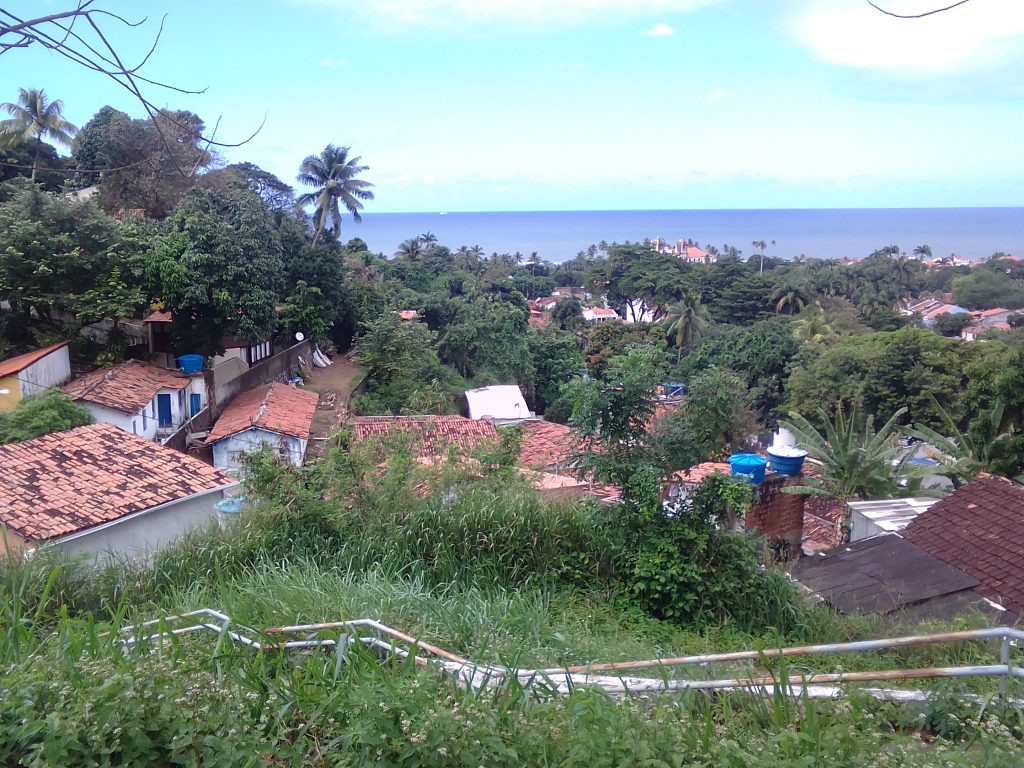
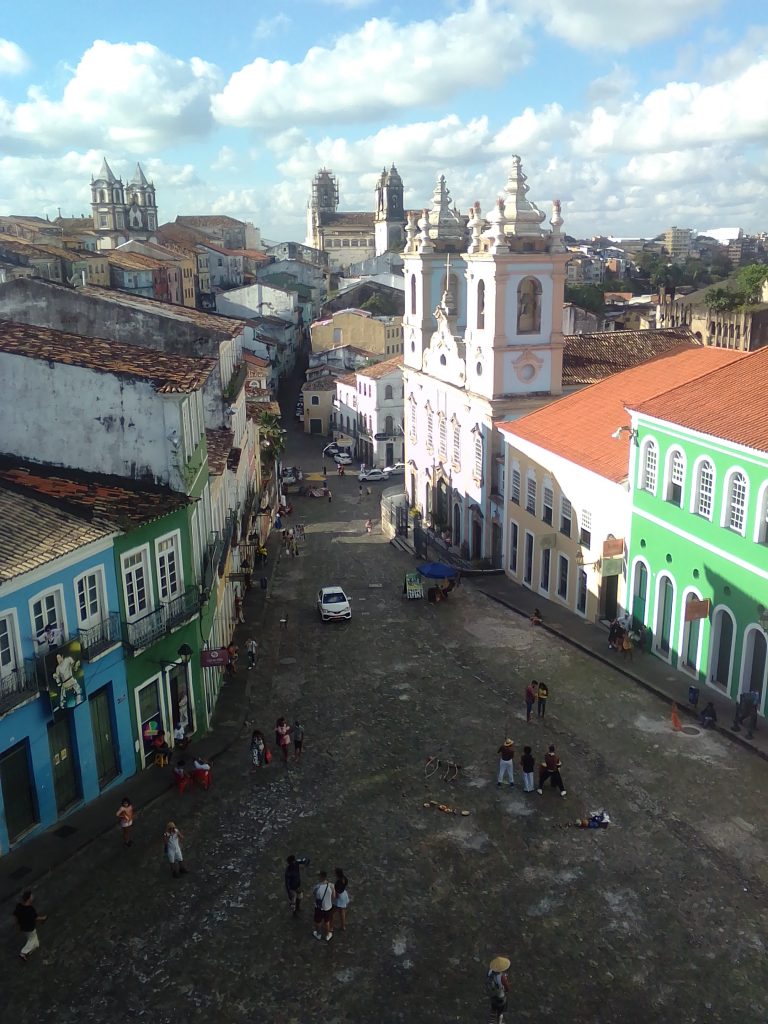


About 400km inland from the coastal capital of Bahia, Salvador, is the Chapada Diamantina, a national park more than three times the size of Switzerland. Most of the interior of Bahia is a biome known as Cerrado, a diverse set of, mainly semi-arid, ecosystems including forests, savannahs and grasslands. The Chapada, a large plateau crossed with huge canyons, is a particularly fertile part of the region, and gets a lot of rain in comparison to neighbouring zones. It was in a small settlement in the Chapada, that I met a French activist who told me members of a nearby Movimento Sem Terra (MST) settlement wanted to begin practising agroforestry and were organising a mutirão (collective work) to plant a syntropic forest, so a few days later we (along with about 10 other people) were on the move.

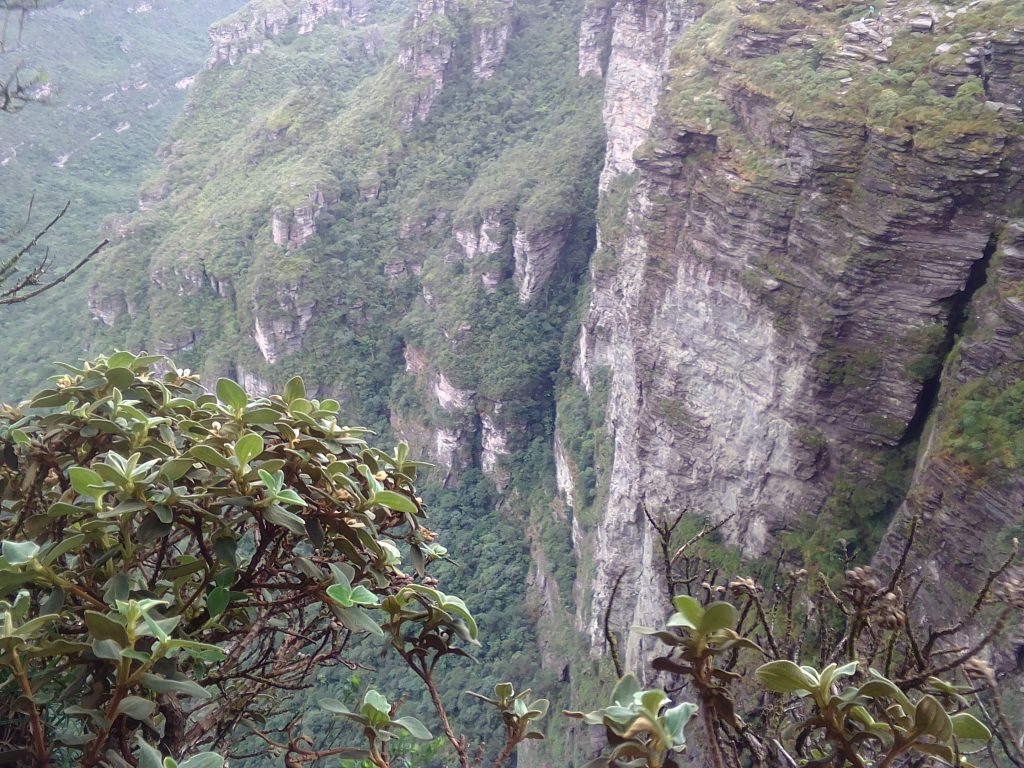

The journey involved descending from the plateau to the surrounding plains. Even though the settlement was not far, getting from one remote village to another wasn’t easy. There was no form of public transport, and the lack of people driving up the quiet country roads made hitching a slow affair, but two days later, we had made it. The settlement, called Assentamento Baixão, was at least several hours walk to the next closest village, another MST settlement called Colonia, which I was told is one of the oldest successful land occupations in Brazil. It took place in the 1920’s, well before the land reform movement and the emergence of MST, when almost all the land plains east of the Chapada, many thousands of hectares, were owned by a single family, whose claim went back to the initial Portuguese invasion. In what we can only imagine were very difficult circumstances, a group of families decided to disrupt this colonial order by occupying the land and successfully gaining title to it.
Baixão was founded 70 years later, in 1998, by over 300 families who occupied the unproductive lands of the Fazenda Braziléia, and were granted the settlement the same year. In that era the government were still dealing with the fierce political backlash from the massacre committed by the military police in Eldorado do Carajás in April of 1996, in which 21 sem terra (landlesss people) were murdered. In this political context the government were more liable to granting settlement status.
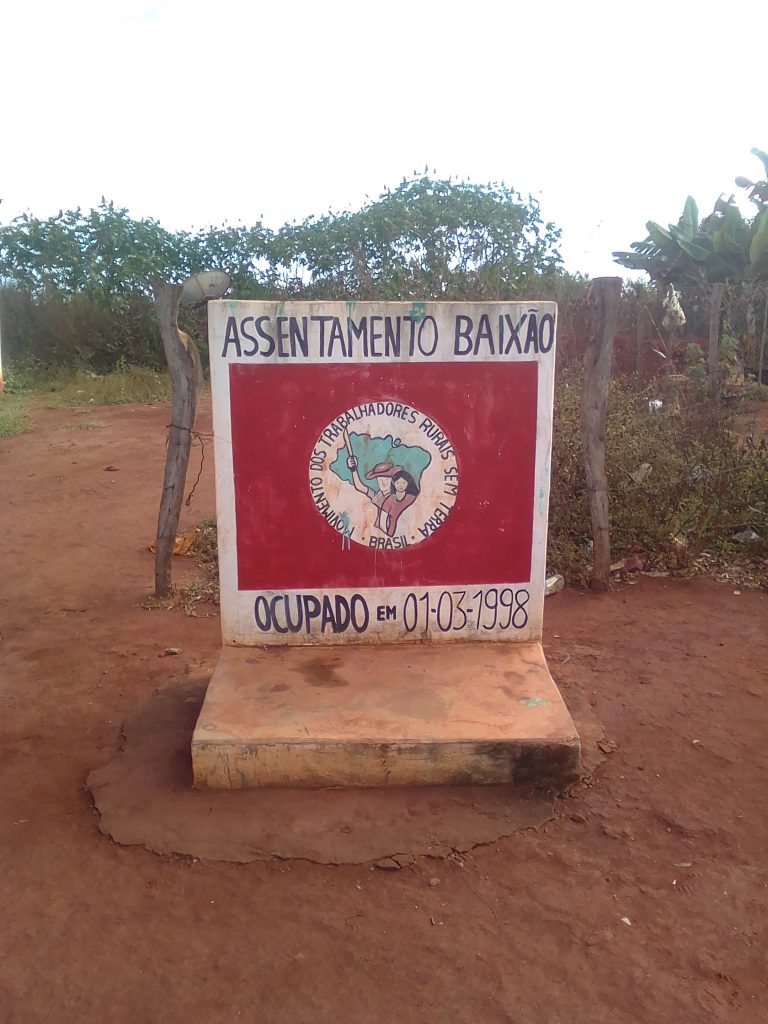
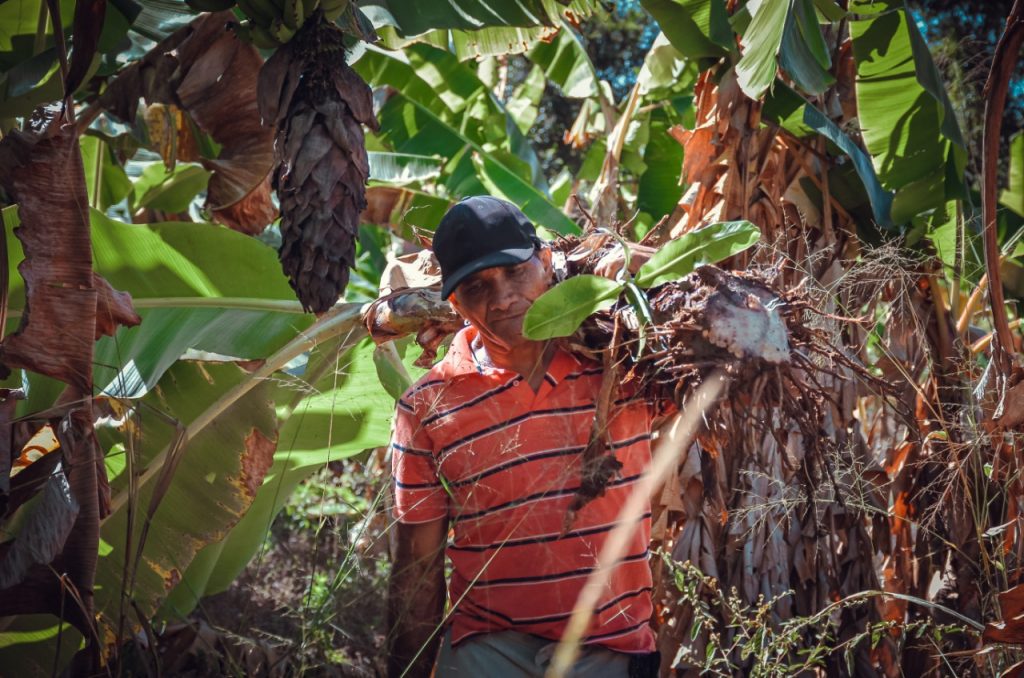
The wider surroundings of Baixão are dry scrub and grasslands, but as one enters into the settlement, there is the growth of some secondary forests and bushlands. We arrived in the dark at the communal hostel, set up to accommodate the occasional tourist who would visit the nearby waterfalls, and were greeted by Jorgão, on whose patch of land we would be planting the agroforestry system, and his very welcoming family, who had already food prepared for us. There were about 10 international travellers and 2 local Brazilians from a town in the Chapada who had come to assist in the mutirão.
The next day, before we went to the area that had been selected for the agroforestry system, I had a walk around the settlement, which was quite large, even without taking into account the agricultural lands. At about a five minute walk from the hostel on an unpaved road, passing by the assembly hall, was the village square. At its centre was a school, and along the sides were two small shops. A bit further up the road was a bar. The roads were lined with many houses, often with little orchards in the back, some of them with elderly people sitting out front. A few scraggly looking cats, dogs and chickens wandered around, and some children were playing in the streets. Around the settlement were scattered trees, and the odd passer-by would offer a friendly greeting, and sometimes a look of curiosity. There was the occasional car, although most people seemed to get around by bicycle. There was also a school bus that went to and from the nearest town, Itaite, once a week. Surrounding the village are the plots of land, where the residents produce a variety of foods: banana, watermelon, sweet potato, cashew, yam, cassava, pumpkin, peanut, orange, maxixe (a small type of cucumber), pepper, sugar cane, andu (a Brazilian palm fruit) and various types of beans.

Along with the physical landscape of the settlement, there is also a vibrant and diverse social landscape to get to know. The people were incredibly friendly and welcoming. This is nothing unusual in Brazil, but it was particularly strong at Baixão. After staying in the hostel for less than a week, I already felt part of the community. Families, individuals, and children, joining us frequently to play, chat, eat, exchange ideas, and invite us to the various social events that were happening. At the weekend in the square people erected a stage and a huge sound system, then danced long into the night to the local forró band. Every region of Brazil has its own rhythm, and in the north east of Brazil, forró is the most popular. It is originated on the plantations of the northeastern state of Ceara, before spreading out across the north-east, it is played with a large triangle, a drum known as a zabumba, a guitar, accordion, and sometimes a type of fiddle with Arabic origins, known as a rebec. It is danced by pairs intertwining their legs in a sideways shuffle.
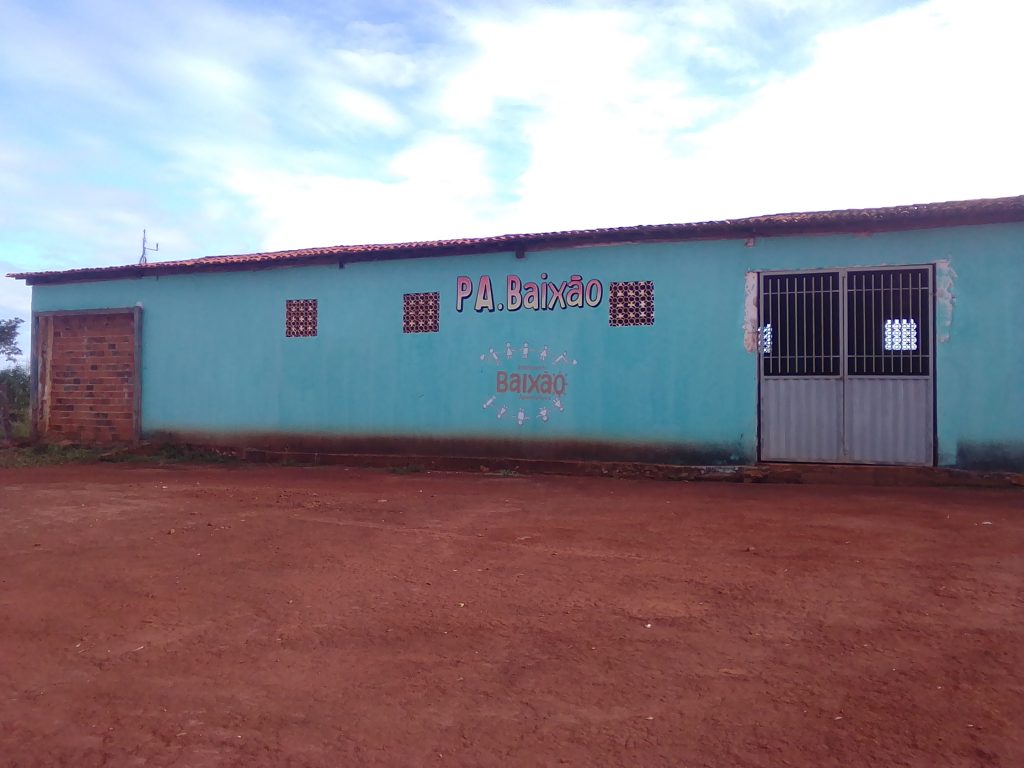
There were three churches, one Catholic and two Evangelical. Although Brazil is traditionally a Catholic country, Evangelical churches have been making huge inroads into Brazilian society. They are generally associated with conservatism and Bolsonaro, but some Evangelical churches, such as the Lutheran Church, are a part of the CPT (Comissão Pastoral da Terra), and played an important supporting role in the foundation of MST. However, a radical position on land reform does not always translate to social liberalism, and some of these churches have very conservative social norms, which can be difficult for people outside the church to understand. What helped me better understand was the story of one woman, who, after seeing that we were all nonplussed that her evangelic church doesn’t allow dancing, explained to us that the only thing that got her through the end of her abusive marriage was the solidarity shown to her by the church community.

Also present at Baixão was a community of candomblé devotees. Candomblé is an Afro-Brazilian spiritual tradition with roots in West Africa. During my time of at Baixão there was a special event taking place, the convocation of an Orixá. The Orixás are powerful African spirits/deities that were brought to Brazil by descendents of the Yoruba in West Africa. A central part of the practice of candomblé is to gather together and invite these Orixás into your territory. Long before arriving at the territory (someone’s house at the edge of the village that is opened up to everyone during the night of the ceremony) you can hear the beat of the drums. But these are just the preparatory beats, announcing to all in a radius of several kilometres of what is to take place at midnight. Arriving to the territory a few hours before midnight, the place was packed, with people having come, not only from the community, but the whole surrounding region. In front of the house was a small enclosed temple that you had to crouch down to enter.
Upon entering the house, after having received the blessing from the hostess, you are met with a huge alter, bedecked by colourful fabrics, flowers, food, candles, and topped off by a statue of Ogum, God of War, Iron and Rum. He was the Orixá that was being invited into the territory that evening. There were smaller shrines in the corners, with offerings and pictures of Christen saints (in order to hide their African ceremonies from their colonial oppressors, every Orixá was given a corresponding Saint). On one side were three large drums of wood and leather, on the other were benches. These were soon overflowing, and so people were standing and sitting on the floor, forming a wide circle, with a few lit candles in the middle of the room. Most people were dressed in red and black, the colours of Ogum. A particularity of this ceremony was that people were smoking cigars and drinking rum. Most Candomblé is done without mind altering plants or drinks, but Ogum is fond of rum and smokes, and so the guest of honour was naturally accommodated.
When the drums started beating, powerful pops and thuds woven together in complex polyrhythms, vibrating the core of your body, people started moving to the sounds, slowly, slowly, then quickly. Suddenly one woman fell to the floors, bellowing unintelligible shouts. People went to assist her but she soon got up and started a wild dance around the room. Her body had been taken over by Ogum. She made strange noises and erratic movements, sometimes knocking into people, but there was always a couple of people assisting her to make sure no one was hurt. Most of the focus in the room was on her for about 20 minutes, until another shout is heard. Another person, this time a man, was on the flour, before getting up and joining the woman in her wild dance. As well as dancing, the possessed people were also doing special kinds of greetings with people in the house, stopping in front of someone, making a series of co-ordinated hand and body gestures, before embracing the person, and then continuing to swirl around the room. All the time the beat of the drums were intensifying, the atmosphere in the room was thickening, the movements were becoming more hypnotic.
This man and woman were the only people channelling Ogum for some time, but when the third person fell, it opened up the floodgates, and soon most of the house were being incorporated. People dancing as if they were trying to get out of their own bodies, others crying and wailing, some laughing manically. One young person started the evening as a man, but at the moment of possession was taken out the side for the moment, and re-emerged as a woman. And this was only 2am! The ceremony was to continue until sunrise. But I had trees to plant in the morning, so I left it there. The next evening there was another event, slightly more relaxed, in which people shared food, and Cabolcos, indigenous spirits of the forest, were invited into the territory. The elderly people incorporated by the Cabolcos would then offer people advice in a funny sounding archaic form of Portuguese.

But although the settlement has a vibrant cultural life, there are many challenges that come with living here, mainly to do with its remoteness, lack of infrastructure, and lack of resources. Many of the settlers live with very humble means, mainly supporting themselves from selling their produce at the market of the nearest town. But here, they face the same problems as small farmers throughout the world. Large mechanised farming, highly subsidized, and powered by fossil fuels, makes food artificiality cheap, and small farmers can’t get a good price for their goods. This individual lack of resources is compounded by the public infrastructure being so poor. As mentioned, getting to the settlement without your own vehicle is not easy, and so the people living here without their own car or motorbike are fairly isolated. This also creates economic difficulties, as it is not always easy to bring the produce to market. Unlike 22% of MST settlements in Brazil1 Baixão does have access to electricity, although there would be pretty regular power cuts. This also means that access to water was sometimes limited as it is dependent on electric pumps. To ensure access to water for his plants, Jorgão dug a hug pool at the top of his patch of land to store water, but at the time of visiting, he was still saving up to buy a plastic tarp to cover the pool.
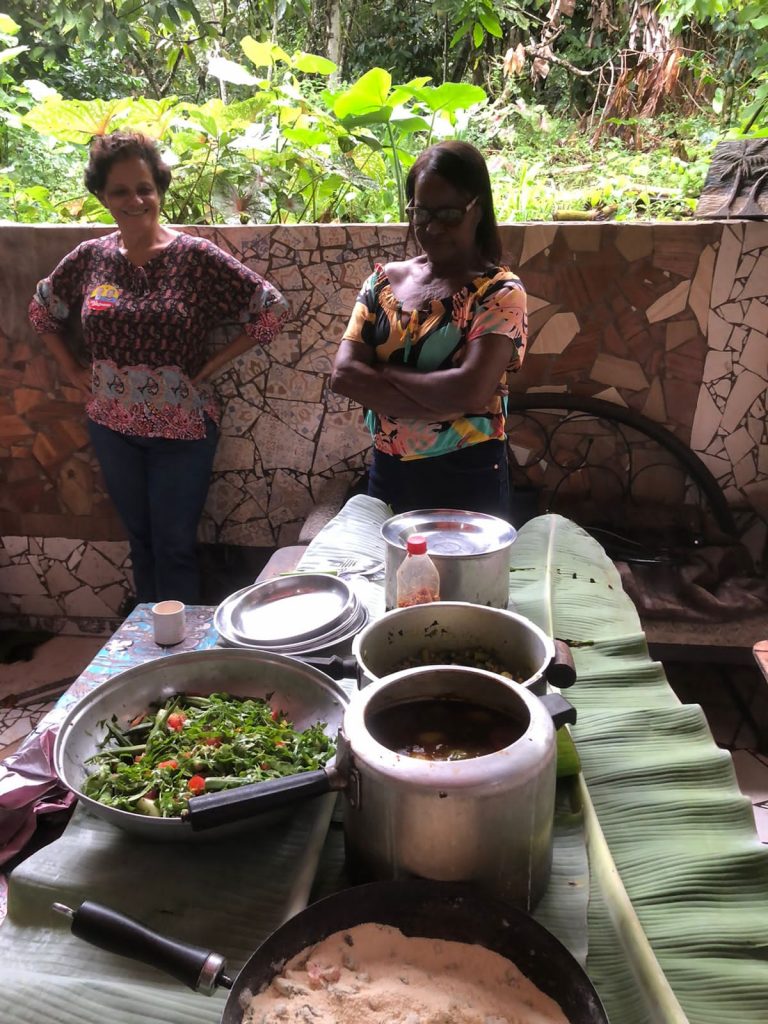
All these difficulties have meant that some people have decided to sell their plots of land and move to the city to try and find an easier life. Of the 300 families that had been part of the original occupation 20 years previously, there were about 140 families remaining. Jorgão hoped that this new venture into agroforestry would reverse this process by: increasing and diversifying the yield; lowering inputs; producing less perishable yields; raising biodiversity, soil fertility and ecosystem resilience; and making the activity of farming generally more appealing to young people.
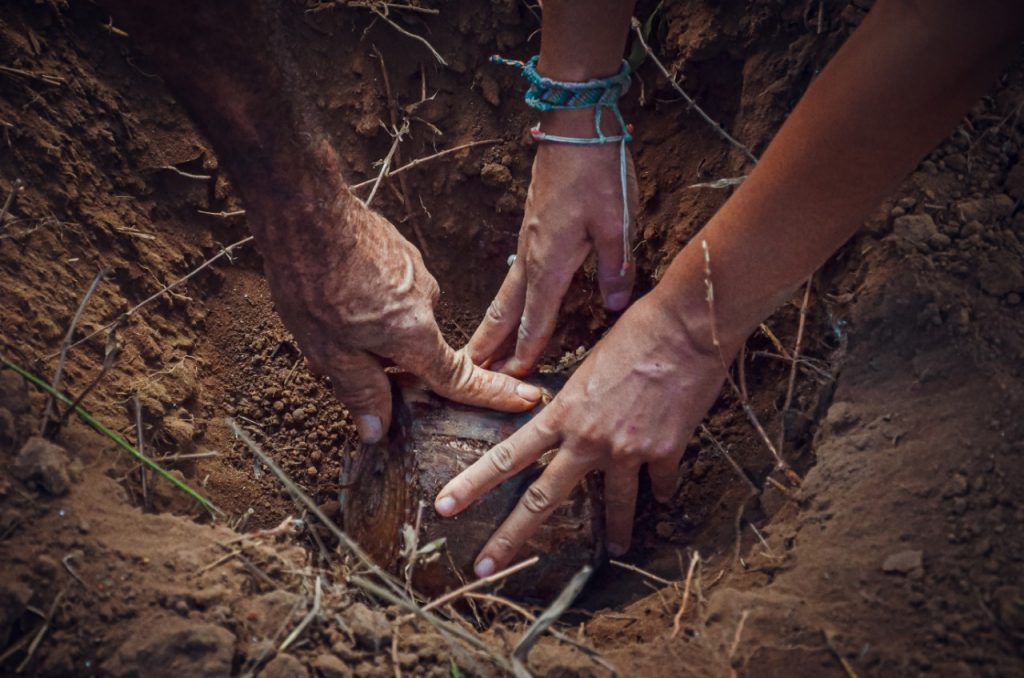
The mutirão took place over a few days. The patch of land, which had been cleared by Jorgão over the previous days, was a few kilometres drive on a dirt road away. Aside from Jorgão, who road around on a rackety old motorbike, most people arrived in cars of people from the surrounding areas who had come to assist in the mutirão. One such woman was from a nearby eco-community, and had been practising agroforestry for several years. She was co-ordinating the planting, which would be done according to the principle and methods of syntropic agriculture.
This form of agroforestry was first developed in Brazil by Ernst Goetsch, who used the technique to reforest 300h of previously barren lands over the 30 years, while also producing huge yields. Over the last 10 years in Brazil it has been taken up by many small holdings family farmers, as well as large plantation owners, as an alternative to the destructive methods of chemically nurtured monocultures, and it is now gaining traction all over the world. Some of the most important elements of syntropic farming are: high density planting, planting various stage of succession, and in various levels of canopy, as well as the practice of drastic amounts of pruning, producing lots of biomass and spurring vigorous growth.
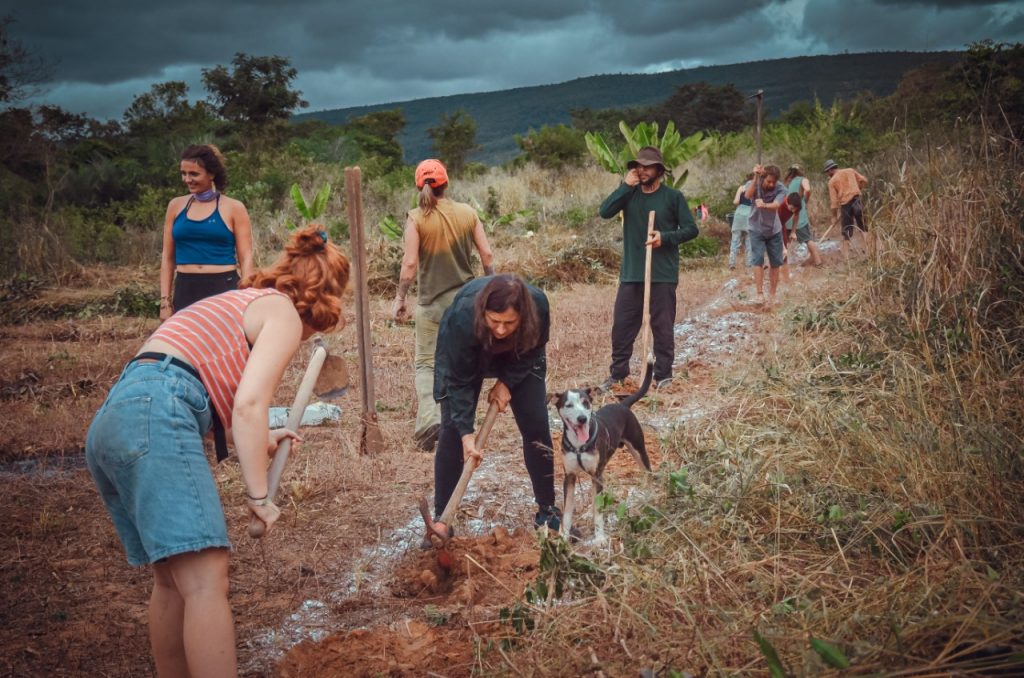
Some of us began digging three long lines of about 30 metres, about a metre wide, while others took a scythe and machete to a nearby thicket to make a pile of mulch. After digging up the lines, and sprinkling them with a bit of rock dust and manure, we planted the seeds, and then the sapling and transplants. These were a mix of all the seeds that we could collectively muster, which included; banana, coffee, tree marigold, cacao, pau brazil, corn, mulberry, bean, different types of palm trees, elephant grass, lemon and orange. Some plants are there to produce a yield, others to support in creating a resilient ecosystem. In Brazil, coffee and cacao are particularly valued in agroforestry systems, as they grow happily in the shade, and produce a very valuable crop. Interspersed between periods of digging and planting, were breaks to eat tasty honey oranges or suck on sticks of sugarcane. The community also provided everyone with a tasty lunch each day of grains and beans that I had never seen before and were very tasty.
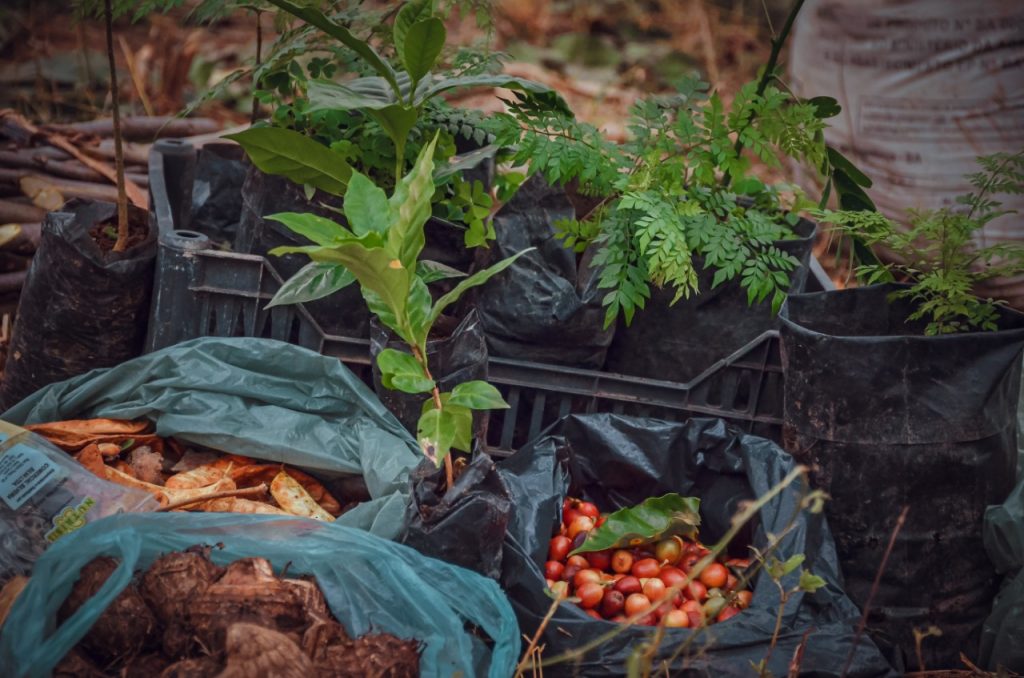
In the middle of the three planting days Jorgão and Benoit, the French activist who had been assisting in the development and organisation of the project convoked a community assembly. Jorgão’s agroforestry system would hopefully be the first of many in the community, the proof of concept for a new type of agriculture that others in the community would adopt. While some other members of the community had participated in the mutirão, the assembly would be an opportunity to present it to the whole community, as well as outline the potential next steps of the project. It was scheduled for 8am. By 8:30 some people started arriving, with almost everyone having arrived by 9:30. The assemble was shaped in a circle, with the assemblies moderator, and the people planning on speaking at the front.

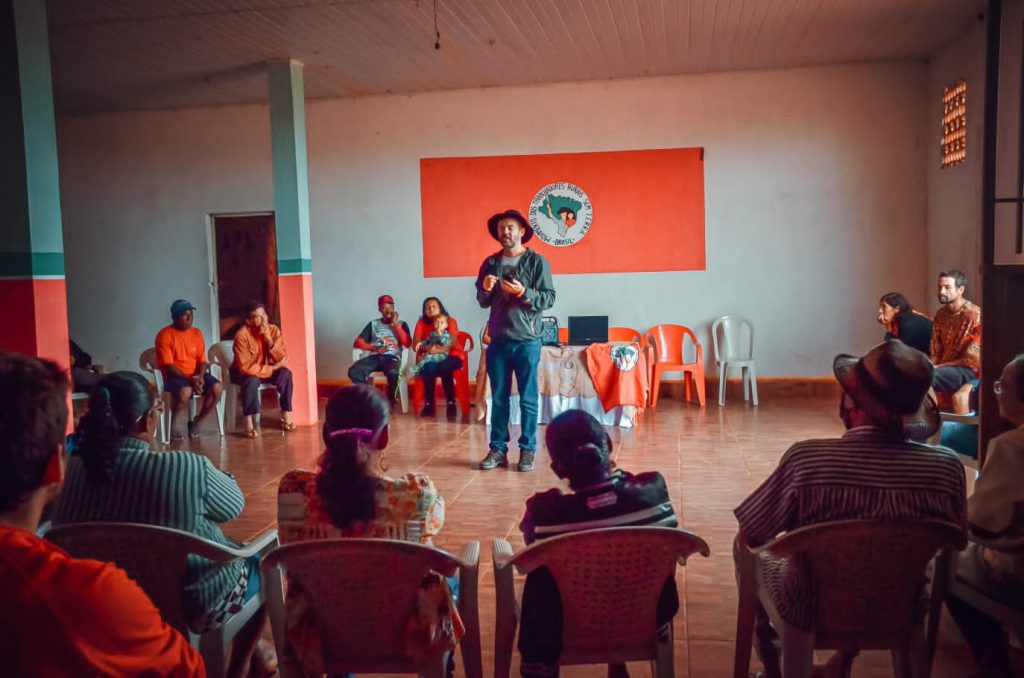
After all standing to hear the MST hymn, the meeting was in session. Benoit was first to speak, and put forward a project that was being developed with the Escola Popular de Agroecologia e Agrofloresta Egidio Brunetto. The aim was to plant 40 tarefas (a measure used for sugar plantations that varies from place to place, but in Bahia is around 9 hectares) in two years, with the co-operation of 15 members of the community. This would be no small commitment; as well as taking up space on the land, agroforestry systems require management and, as it is a new method for most, a commitment to learning. Those who took on the project would also get some training in agroforestry from the Escola Popular, and, after a few years, would begin to see a large return in terms of yield. Also beginning introduced was a related project, in conjuncture with a local university, would wanted to study integration of bamboo into agroforestry systems, in terms of their drought resistance and water harvesting abilities.

Here we get a good insight into how the decentralised organisation of MST functions. There is a plan decided on the national level; for example, a plan of reforestation and the adoption of agroforestry. This plan is then taken up by members working on the state level with things actions such as the foundation of schools, and the propagating the details of the plan and providing information. This is then taken up on the community and individual level, deciding how best to implement the plan according to their own local context. There is no centralised bureaucracy imposing directives on the settlements from above, and yet the initiatives and impulses that emanate from the centre stimulate a response in the rest of the organisation. This type of organisation (large scale co-operation, with decentralised implementation; creating common goals, and allowing for diverse methods of achieving those goals) is one that enjoys many of the benefits of large scale organisations, while avoiding their most dangerous pitfalls.
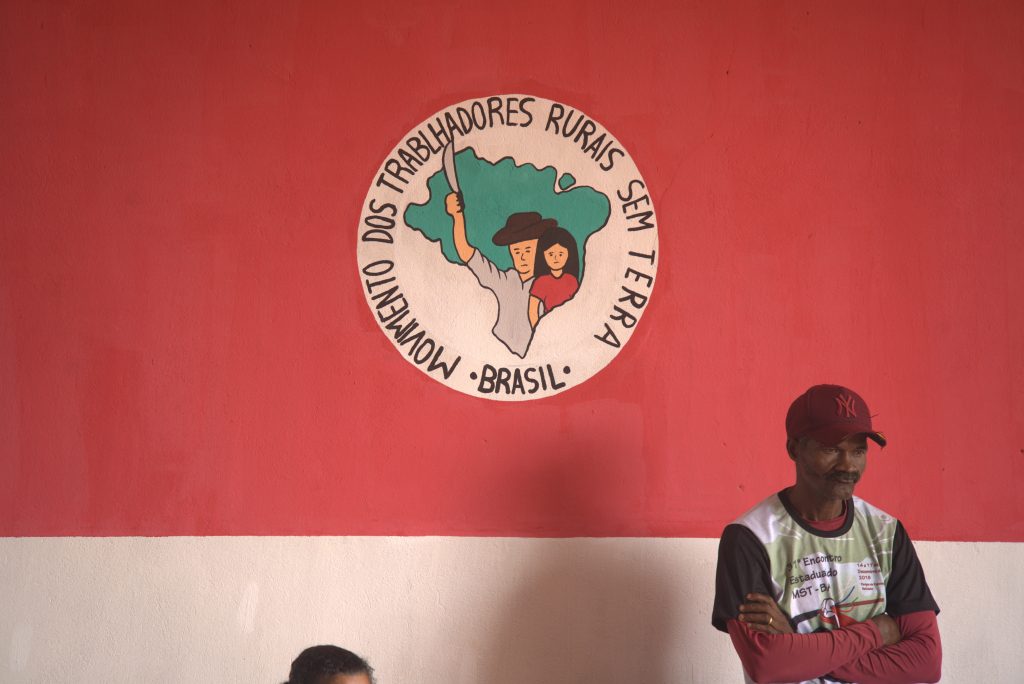
Another speaker at the assembly was a member of CPT, who came to discuss developments in land ownership in and around the Chapada over the last few years. With the climate becoming hotter and drier, and the rains less reliable, the water supplies emanating from the Chapada become even more essential for the survival of everyone in the region. However, bit by bit, large companies are buying up all the land near the source, and with water flowing through it, threatening the water supplies of the communities below. Already one of these companies plans to build a mine along one of the rivers, taking up huge amounts of water and polluting the rest. The next few years will be essential to ensure that the region doesn’t become an industrial desert, and the collective good of water isn’t ceded to the pursuit of corporate profits.
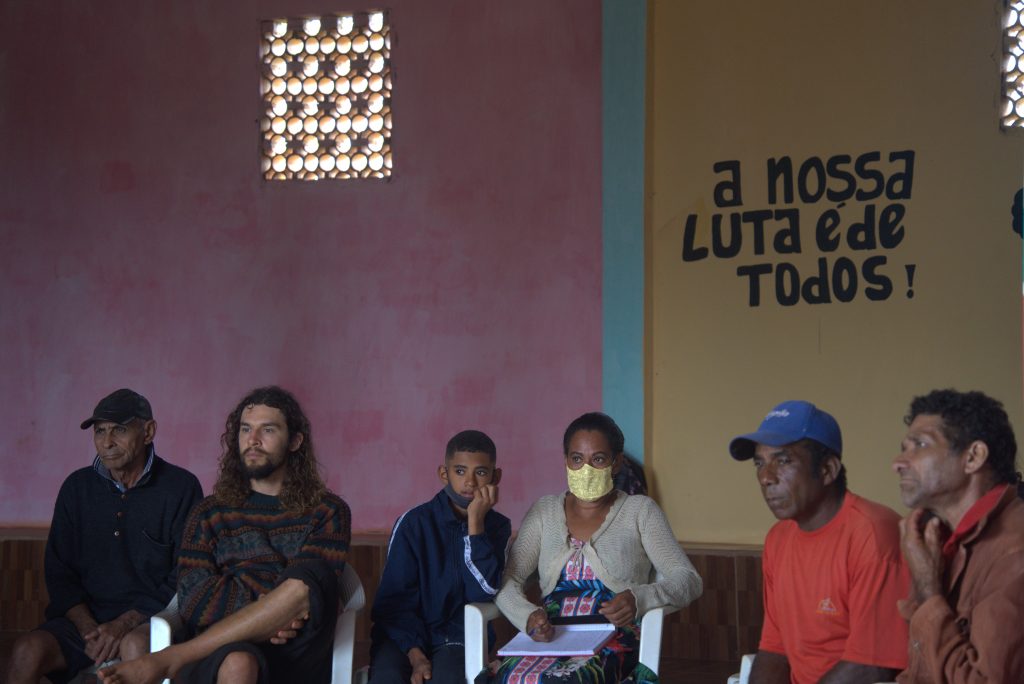
At the same time as the agroforestry planting day, another action was being planned for – the reoccupation of an adjacent unproductive, Fazenda Dois Rios. The land is about 8500 hectares in size and, as the name indicates, has two rivers flowing through it, along with one beautiful waterfall. It is some of the most fertile land in the region, but has been lying empty for many years because of a family feud by the wealthy landlords who own it. In March of 2022, a group of 300 landless families exercised their constitutional right to settle these unproductive lands and started a camp. However, these families were met with brutal violence from mercenaries on the payroll of the absentee landlords. After threatening the families for a number of months, they cornered one man as he was leaving the camp alone and beat him up blunt objects, causing severe injuries. When the rest of the community got word of the attack, they rushed out to assist their companheiro, but when they arrived, the mercenaries fled. When they took up the chase the mercenaries fired shots, hitting one woman. She was brought to the hospital in a critical condition, but managed to survive. Despite the severity of the crimes, there was no investigation opened by the police, and the camp continued to suffer from intense intimidation and violence. After the mercenaries snuck into the camp one night and fired shots into the tents, fortunately not hitting anyone this time, it was decided that the camp had to be abandoned, and the families regrouped to plan their next move.
This is clearly a very dangerous struggle for these families to be engaging in. But to fully understand their situation it is important to know that in 2022 33 million people in Brazil were going hungry because they couldn’t afford enough food; while 125 million, about 60% of the population were suffering from some level of food insecurity. While this is happening, fertile lands across the country are lying empty, as wealthy elite bicker amongst themselves to maximise their individual profits. The danger of armed mercenaries is acute, but having a piece of land to provide food for you and your family is also a matter of survival. What’s more, Brazilian rural families are tough, experienced in the struggle and not easily disheartened.
It was decided that another attempt at occupying the land would take place in July, a few days after planting the agroforestry system. Inspired by their new experiences with agroforestry, part of the plan of the occupation was to start to set up a centre of learning for agroforestry, and hopefully attract people interested in the practice to come and join to occupation under the banner ‘occupy, resist, regenerate, produce’. However, while the occupation got off to a hopefully start, they again suffered from intimidation. A few months after the camp began they again suffered from violent attacks, culminating with 20 masked men invading the camp, forcing everyone to leave and burning the camp to the ground. At the time of writing, these families were regrouping and planing their next move in these extremely difficult circumstances.

A few weeks later, I was staying near the coast of Bahia with Mestre Cobra Mansa, capoeira master and permaculturist, and happened to meet another group of sem terra from a nearby camp, who came to meet my host, and learn a bit about permaculture and agroforestry. About 20 people from the community, men, women, young and old, were given a tour of Cobra Mansa’s land, from the medicinal herb laboratory, to the irrigation systems, to the agroforests. Of immediate interest to them were the compost toilets, as there was no plumbing system at their camp. Also present was a representative of the Partido dos Trabalhadores of Bahia, who gave a speech about the importance of the upcoming elections, including the presidential election between Lula and Bolsonaro, highlighting the mutually beneficial relationship between PT and MST, and the danger posed by Bolsonaro to the movement. It was a nice morning, ending in a communal lunch, and again highlighted how individual settlements and camps within the movement were taking the initiative to incorporate the environmental struggle into the movement.

1 Pesquisa de Avaliação da Qualidade dos Assentamentos da Reforma Agrária. INCRA. 2010